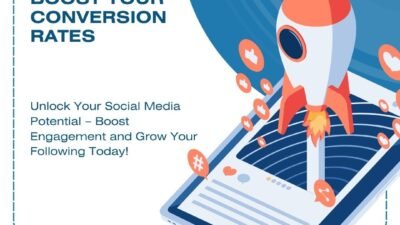“Conversion rate” is a term you will see often in sales and marketing. A good conversion rate is not enough regardless of how high the figure may seem or where above average your conversion rates have been before. In fact whether your business stays afloat may depend heavily on whether it can survive the difficult period of flatness. Understanding and improving your conversion rate are prerequisites for successful business management and growth.
This blog post aims to explore what makes for an acceptable sales conversion rate; factors influencing the rate in different guises; as well as a few practical tips for converting more hits into sales. Whether you are concerned with comparing your own performance, or are seeking ways to convert more leads into real customers, there is something of interest here for all readers.
Understanding Sales Conversion Rates
Before we define a “good” conversion rate, let’s clarify what a sales conversion rate actually is.
A sales conversion rate is the percentage of leads that turn into paying customers. It’s calculated using the formula below:
Sales Conversion Rate = (Number of Conversions / Number of Leads) x 100
For example, if you received 1,000 leads in a month and 100 of them made a purchase, your sales conversion rate is 10%.
Conversion rates serve as a key performance indicator (KPI) in sales and marketing, revealing how effectively your strategies are turning interest into action.
What Is Considered a “Good” Sales Conversion Rate?
It’s not a one-size-fits-all scenario. What qualifies as a “good” sales conversion rate depends significantly on your industry, sales model, and target market. Here’s a breakdown to help you benchmark according to your niche.
- E-commerce: Conversion rates for e-commerce businesses usually range between 1-3%, according to Statista. However, well-optimized websites can achieve rates closer to 5% or higher.
- B2B Sales: B2B markets typically see slightly lower conversion rates, generally falling between 2-5%, as the sales cycle for these industries tends to be longer and more complex.
- Lead Generation Websites: Companies focused on gathering leads boast an average conversion rate of 10-15% for email subscriptions, but smaller percentages result in actual sales.
- High-ticket Products and Services: For expensive or luxury items, conversion rates might dip below 2%, as customers tend to deliberate more on higher investments.
While industry benchmarks are essential, they’re not set in stone. A “good” conversion rate ultimately depends on your business goals and the qualification of your leads.
Factors That Influence Your Sales Conversion Rate
Several factors can positively or negatively affect your sales conversion rate. Knowing these variables can help you identify improvement opportunities.
1. Target Audience Fit
If your leads aren’t aligned with your Ideal Customer Profile (ICP), your conversion rate is likely to suffer. Selling to the wrong audience means wasted time and fewer sales.
2. Lead Quality
Not all leads are created equal. Those acquired through well-targeted advertising or inbound marketing strategies generally convert better than cold leads.
3. Website or Funnel Experience
Your website or sales funnel plays an integral role in conversions. An intuitive, fast, and mobile-friendly design offers a better experience and increases chances of customers completing a purchase or inquiry.
4. Sales Process Efficiency
A lengthy or complicated sales process can harm your conversion rate. Streamlined processes, such as digital contracts or instant quotes, enable quicker buying decisions.
5. Product/Service Pricing
Your pricing strategy can either attract or repel potential customers. Offering clear value will help justify the cost, especially if your pricing falls on the higher end.
6. Customer Trust and Social Proof
For first-time buyers or clients, trust is crucial. Reviews, testimonials, and social proof can substantiate your offerings and provide reassurance, often boosting conversions.
7. Competition in the Market
If numerous competitors compete for similar demographics, your ability to differentiate your product or service becomes key to conversion success.
How to Improve Your Sales Conversion Rate
If your current conversion rates fall below your expectations, don’t worry. There are many ways to optimize your approach and turn more prospects into customers.
1. Refine Your Lead Quality
Focus on generating high-quality leads that match your ICP. Use tools like customer analytics software, data segmentation strategies, or AI-driven platforms to get better-targeted prospects.
2. Enhance Landing Pages
If you rely on landing pages for conversions, ensure they are optimized. Use clear call-to-actions (CTAs), engaging headlines, compelling visuals, and mobile-friendly design. A/B test different elements to see what resonates best with your audience.
3. Strengthen Follow-Ups
Sometimes, a lead just needs a little nudge. Implement a structured follow-up system, such as automated emails or personalized outreach, to engage with prospects who’ve shown interest but haven’t yet converted.
4. Leverage Social Proof
Integrate customer reviews, video testimonials, and trust badges into your website and marketing materials. Seeing other customers speak highly of your brand instills confidence and motivates action.
5. Offer Incentives
Providing time-sensitive discounts, freebies, or loyalty incentives can encourage hesitant leads to make a quick decision. For example, offer a 10% discount on first purchases or free shipping for orders above a specific amount.
6. Conduct Sales Training
Invest in training your sales team to effectively handle objections, recognize buying signals, and close deals. Skilled salespeople can make a significant difference in your conversion numbers.
7. Shorten the Sales Cycle
Eliminate unnecessary steps in your sales funnel. Reducing friction enables prospects to make decisions faster, resulting in higher conversion rates.
8. Use AI and Automation
By streamlining and personalizing your sales process with AI tools and CRM software, the way you approach business will be completely different. They can help you track leads, predict customer behavior and automatically perform routine tasks, freeing up extra hours for your team members to spend getting high-value customers involved.
9. Analyze and Adjust
Always be testing. New strategies should always be tested as you measure and tweak your performance due to this understanding of what makes marketing good: “While making changes next month will have little effect on traffic and conversions, today is in the middle of an experiment we are running.”
Key Takeaways for Better Conversions
In a strong conversion rate, simply meeting benchmarks doesn’t cut it. Instead, businesses must continuously refine results in order to meet their specific goals and objectives. Here are a few such pertinent variables.
Firstly, take care to know completely when you consider that a “good” conversion rate. Have your conversions been coming in? Keep an eye on your lead quality and how confident potential customers are. Continuously optimize user experience, follow ups, and how efficiently you make your sales. This will give you great results for that extra bit of effort.





